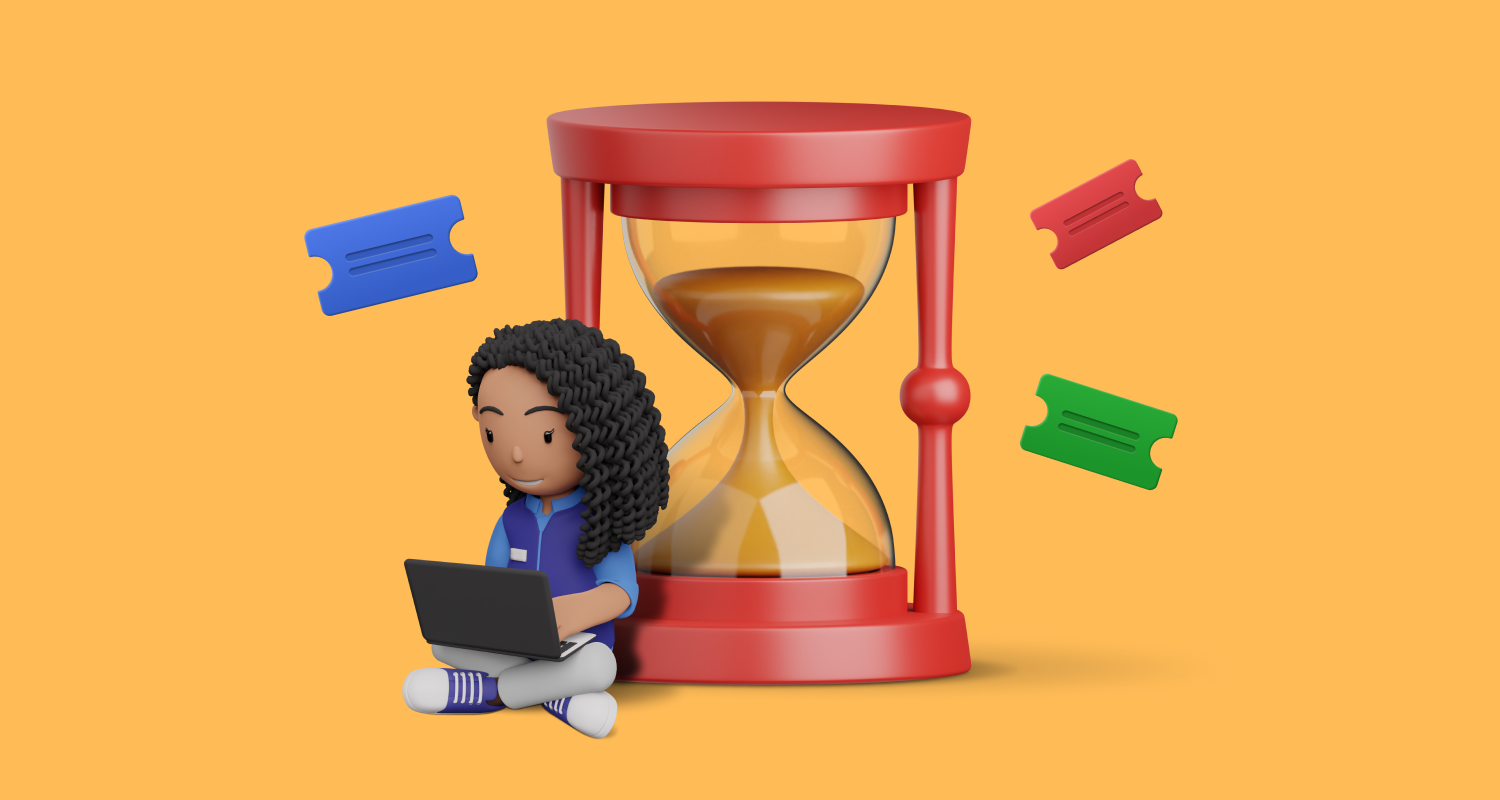61% of consumers define an excellent customer support interaction as one that offers a short time to resolution. The overall customer experience relies on your ability to promptly deliver comprehensive solutions to a customer’s issue, allowing them to continue with other tasks.
This blog will guide you through techniques to help you boost customer satisfaction by reducing ticket resolution times.
What is time to resolution?
Time to resolution (TTR), also called average resolution time or mean time to resolution, refers to the time taken by customer support agents to resolve customer issues. This SLA metric indicates the effectiveness of your team in addressing customer concerns.
An increased time to resolution may point to various issues, such as insufficient staff, inadequate training, or poorly designed processes. On the other hand, a low TTR implies that your team is highly effective.
How to calculate mean time to resolution
The following metrics will help you calculate the mean time to resolution.
- The total resolution time, which represents the sum of the time taken to resolve individual tickets within a given period.
- The total number of resolved requests, which is the total count of tickets resolved within the same time frame.
To calculate your team’s resolution time, apply the following formula:
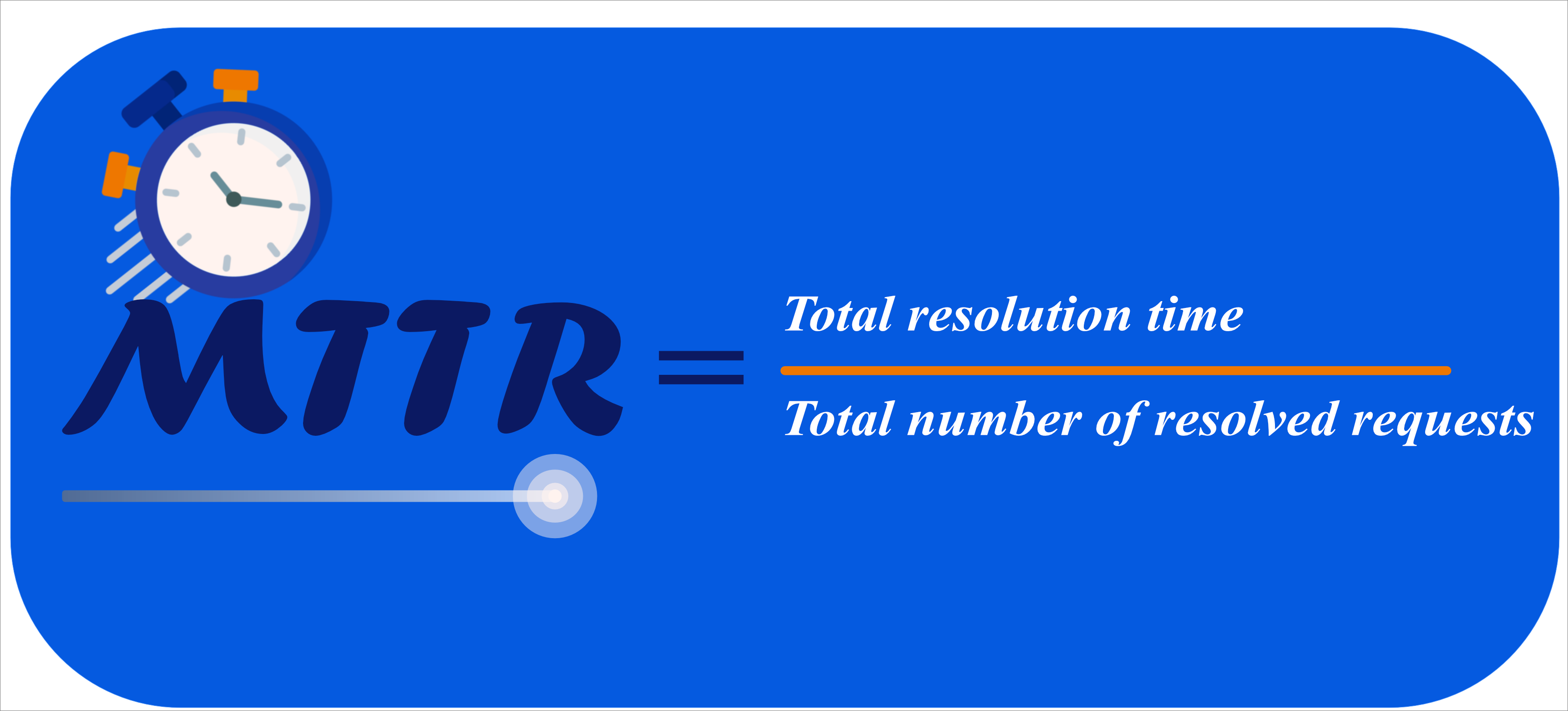
For example, if your customer support team resolves 200 tickets in a month, and the TTR for those tickets is 800 hours, then the MTTR for that month would be 800/200 = 4 hours.
Using a customer service helpdesk effectively allows you to measure your mean time to resolution using an automated dashboard.
How do you reduce your average resolution time?
Customers seek prompt answers or solutions to their inquiries or complaints when they reach out to customer support.
Therefore, enhancing your time to resolution is a key business strategy.
Here are some tips on how to reduce your mean ticket resolution time.
1. Improve your first response time (FRT)
Reducing wait times can significantly decrease your resolution time. Consider improving your first response time as the first step in this endeavor.
You can achieve this by leveraging features such as live chat and ticket auto-assignment to assist your agents in managing the customer queue.
For quick issue resolution, identify and eradicate any inefficiencies that could possibly extend wait times.
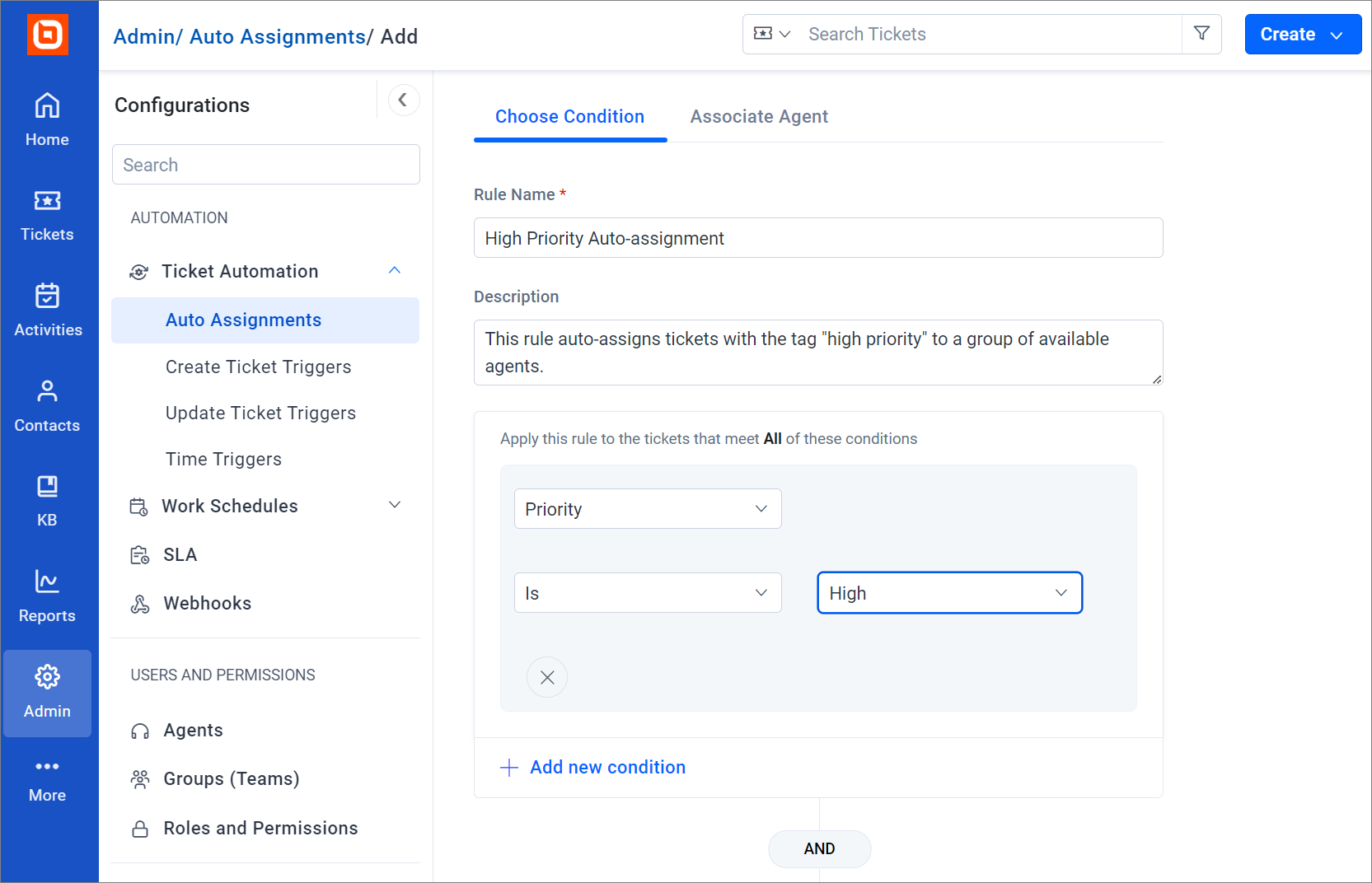
2. Train and empower your support team
Allarium reports that 74% of employees feel they aren’t reaching their full potential at work due to lack of training and development opportunities.
Invest in training and skill development for your support staff to improve their ability to resolve customer issues quickly and effectively.
Since technical problems prolong the time to resolution, train your support team on effective escalation strategies so that when such issues arise, your team knows where to direct them.
Besides, equipping your support team with appropriate tools and technology—like customer relationship management (CRM) software—will empower them to address customer concerns more effectively.
3. Implement effective communication channels
Implementing effective communication channels will significantly reduce your time to resolution by:
- Streamlining the flow of information
- Promoting information sharing between your team members
Efficient communication systems ensure that all relevant parties are on board with any issues or changes, enabling them to address concerns and make decisions more quickly. The timely exchange of information minimizes misunderstandings, miscommunications, and delays that can slow down the resolution process.
4. Use ticket prioritization and categorization
Prioritizing tickets allows urgent issues to be addressed first and ensures the enforcement of service level agreement (SLA) rules. Sorting tickets based on criteria, such as ticket type, helps:
- Enhance organization
- Optimize workload distribution
- Establish achievable goals
- Minimize time to resolution
Assigning tags and statuses to tickets enables support teams to track tickets through each stage, like “on hold” or “pending review,” and keeps customers informed on the progress. Periodically monitoring and reporting the status of tickets not only reduces time to resolution but also boosts customer satisfaction.
5. Set realistic response times in SLAs
Setting realistic response times in SLAs establishes clear expectations for both your support staff and customers to optimize communication and prioritization of tasks.
Outline achievable timeframes to enable your support teams to effectively allocate resources and prioritize tickets based on severity, complexity, and the agreed-upon SLA.
This will prevent overloading your support staff with unreasonable demands and excessive follow-ups.
Informing clients on when to expect a solution will buy your support staff time to focus on resolving issues, thereby lowering ticket resolution time.
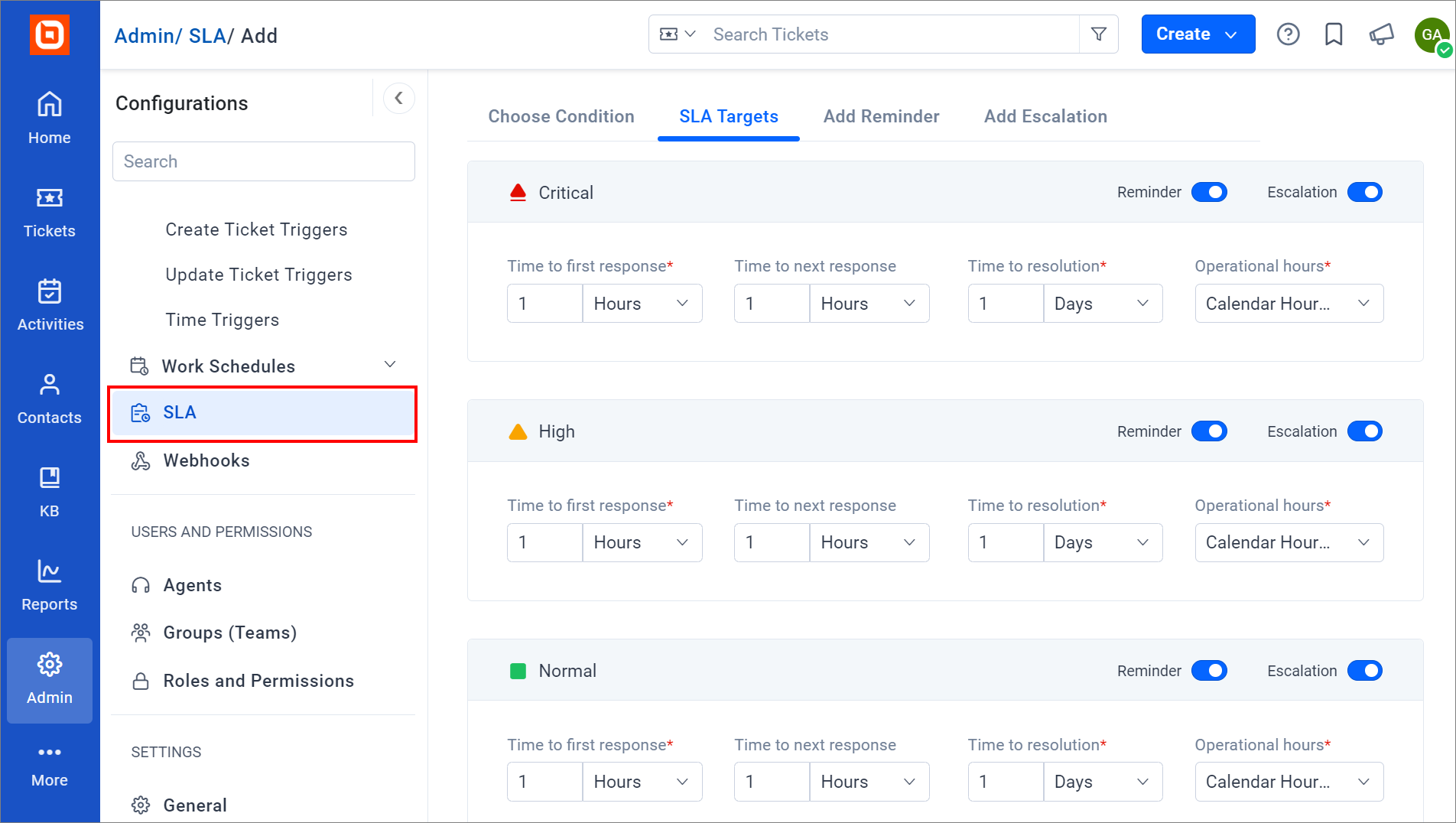
6. Monitor and analyze performance metrics
Improving the mean resolution time demands the establishment of a tracking system to oversee your team’s performance over time.
Consistently monitor customer support key performance indicator (KPI) metrics such as:
- Average first response time
- Average resolution time
- SLA breaches
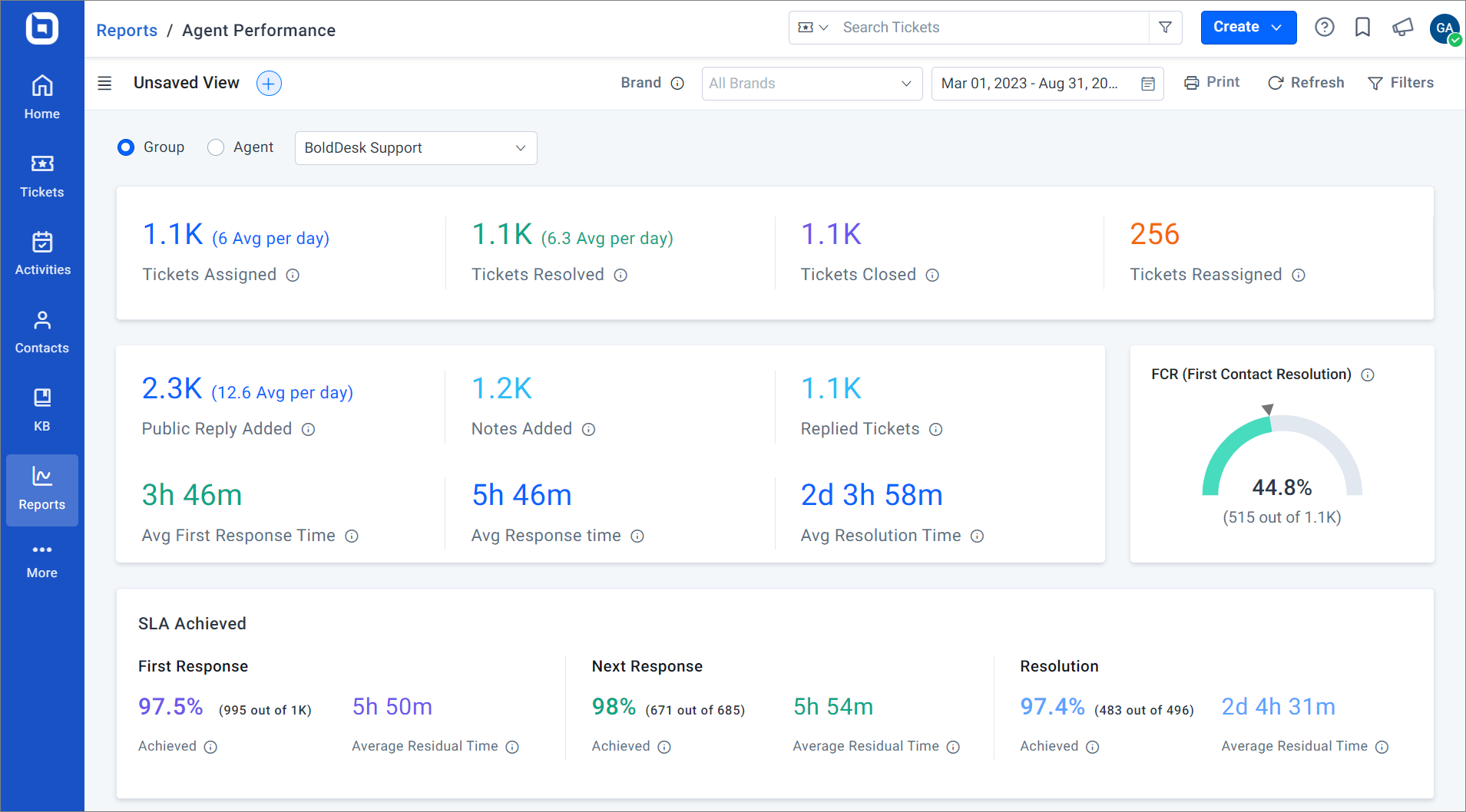
These KPIs offer essential insights that can help you identify areas for improvement in your support processes.

You can then implement targeted strategies, optimize resource allocation, and refine help desk workflows to improve ticket resolution times.
7. Encourage collaboration and teamwork
By fostering a collaborative environment, employees are more likely to share knowledge, expertise, and resources, which enables them to efficiently identify and resolve issues.

Collective team efforts:
- Speed up the resolution process
- Enhance the quality of service
- Fully resolves customer issues
- Boosts customer satisfaction rates
8. Automate repetitive tasks to save time
Doing the same task over and over again is not only time-consuming but also annoying. Automating customer service processes ensures you not only minimize errors but also allow your support team to focus on more critical issues.
You can consider automating several actions, such as:
- Adding tags to tickets
- Sending ticket updates to customers
- Assigning tickets
- Sending real-time notifications for every ticket action
- Sending escalation notifications for overdue tickets
9. Implement a robust knowledge base for self-service
The importance of a knowledge base in customer service cannot be overstated. Implement a self-service tool to provide a centralized repository of information, solutions, and best practices.
It will enable your support agents to quickly find relevant information to resolve issues.
A well-created knowledge base with features like search and auto-suggest empowers customers to find answers to their queries without needing to contact support, reducing the overall volume of tickets generated.
In turn, this frees up support agents so that they can focus on resolving more complex and urgent issues.
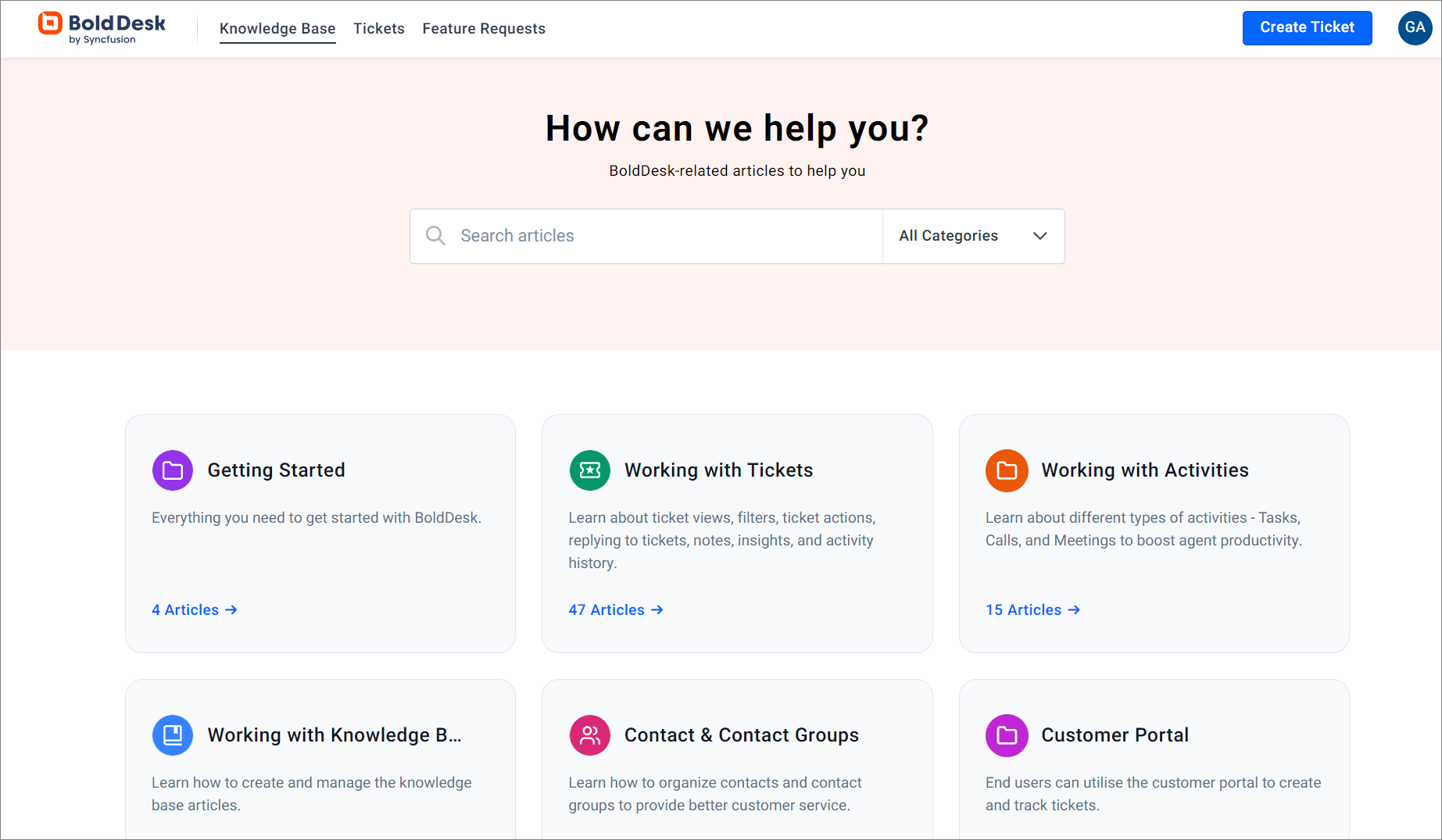
10. Proactively address common issues
A brilliant way to save time is by avoiding problems. Proactively addressing common issues will help you reduce mean resolution time by minimizing the volume of incoming support tickets and facilitating faster resolutions.
Identify and resolve frequent problems—like bugs or system hiccups—before they escalate.
This will prevent a backlog of requests, allowing your customer support team to focus on more complex, unique issues.
11. Create and use canned responses
Use canned responses to efficiently handle repetitive customer issues. This approach decreases time to resolution by eliminating the need to type out the same response repeatedly.
Well-crafted pre-written replies will also ensure that you provide consistent and accurate responses to common queries to boost customer satisfaction and reinforce your brand.
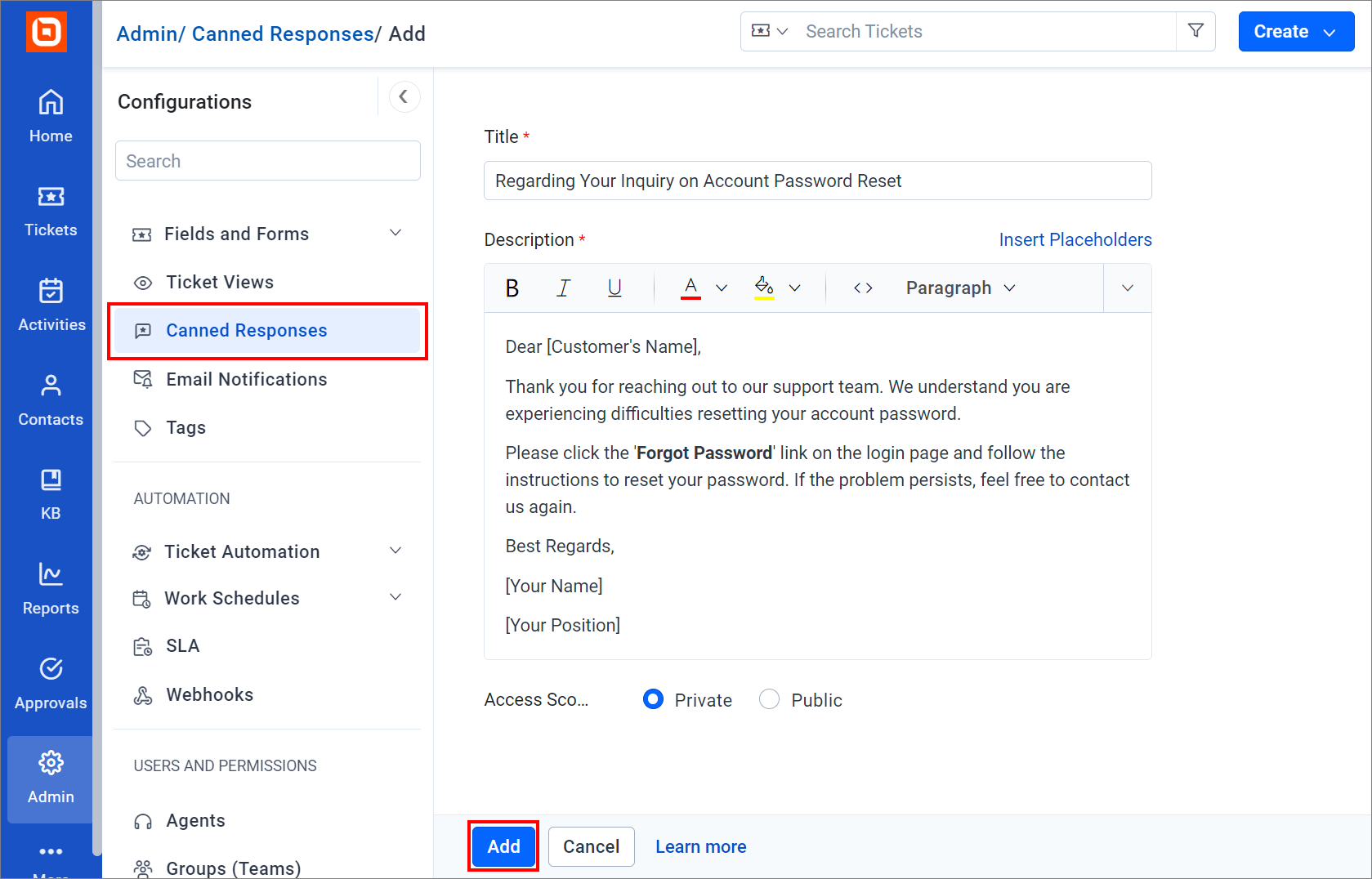
Get started on reducing your time to resolution
Improving the ticket mean time to resolution is essential for any business that aims to provide exceptional customer service and maintain strong customer relationships.
Implementing help desk software will help you put to work the tips we’ve discussed, enhance your operations, and eventually improve your average resolution time.
Try BoldDesk, the best help desk software for ticket management. Contact our support team to schedule a 30-minute live demo to experience the cutting-edge capabilities it can offer to your support team.
Begin a 15-day free trial to discover how BoldDesk’s features can be customized to meet your unique business needs.
Related articles



 Email Ticketing System
Email Ticketing System